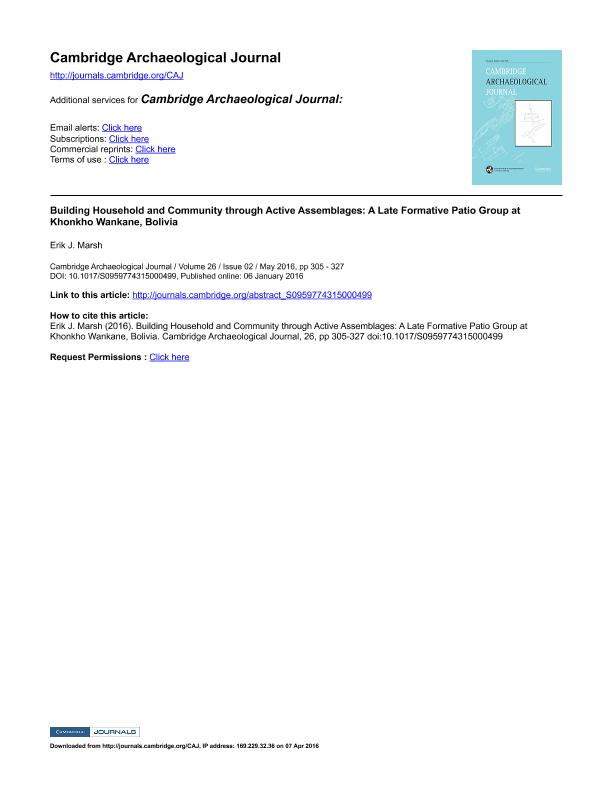Artículo
Building household and community through active assemblages: A late formative patio group at Khonkho Wankane, Bolivia
Fecha de publicación:
05/2016
Editorial:
Cambridge University Press
Revista:
Cambridge Archaeological Journal
ISSN:
0959-7743
e-ISSN:
1474-0540
Idioma:
Inglés
Tipo de recurso:
Artículo publicado
Clasificación temática:
Resumen
A community is an active assemblage of human and non-human elements bound together by interactions. Archaeologies of communities shed light on sets of overlapping and geographically emplaced assemblages of individuals, practices, spaces, buildings, objects, animals and landscapes. This article presents an archaeology of communities based on a remarkably well preserved Late Formative (ad 1–500) patio group at Khonkho Wankane, Bolivia. Excavation data provide a high-resolution chronology and document two varieties of assemblages: (1) those that played a greater role in biologically and socially reproducing the community, such as daily food and tool production; and (2) those that played a greater role in its transformation, such as gatherings, work parties and construction projects. In the patio group, intimate meetings took place in small, private spaces where incense was burned. Larger gatherings took place in an outdoor space where painted Kalasasaya small jars and bowls were active elements in interactions between residents and visitors. These events most likely involved work parties that contributed to the physical and social construction of the community. Assemblages at multiple scales built a diverse Late Formative community, which played a principal role in regional interaction networks. Within a few generations of residents leaving their homes in Khonkho, local and regional interactions generated the emergence of a state at Tiwanaku.
Archivos asociados
Licencia
Identificadores
Colecciones
Articulos(CCT - MENDOZA)
Articulos de CTRO.CIENTIFICO TECNOL.CONICET - MENDOZA
Articulos de CTRO.CIENTIFICO TECNOL.CONICET - MENDOZA
Citación
Marsh, Erik Johnson; Building household and community through active assemblages: A late formative patio group at Khonkho Wankane, Bolivia; Cambridge University Press; Cambridge Archaeological Journal; 26; 2; 5-2016; 305-327
Compartir
Altmétricas




